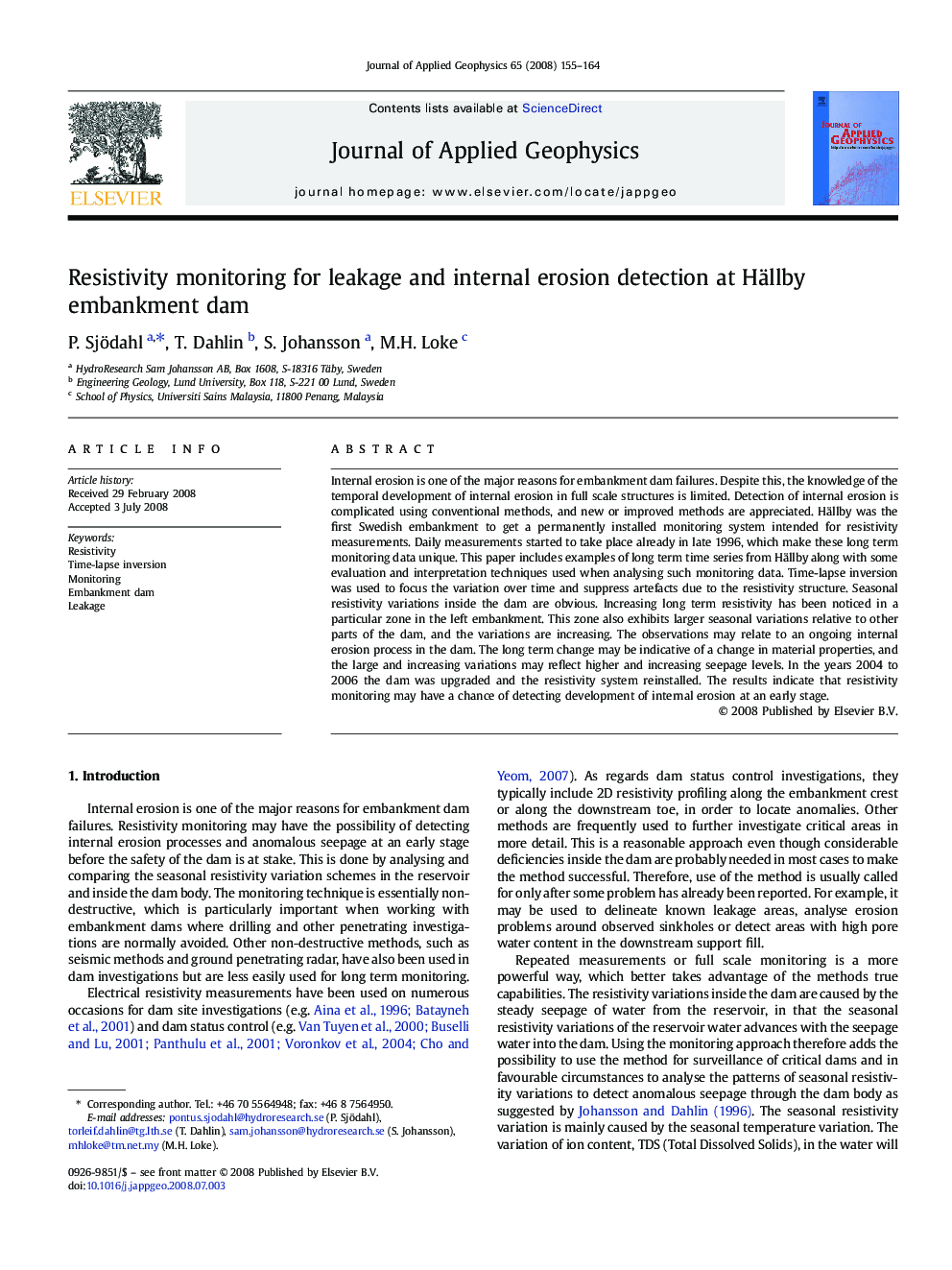| Article ID | Journal | Published Year | Pages | File Type |
|---|---|---|---|---|
| 4741247 | Journal of Applied Geophysics | 2008 | 10 Pages |
Internal erosion is one of the major reasons for embankment dam failures. Despite this, the knowledge of the temporal development of internal erosion in full scale structures is limited. Detection of internal erosion is complicated using conventional methods, and new or improved methods are appreciated. Hällby was the first Swedish embankment to get a permanently installed monitoring system intended for resistivity measurements. Daily measurements started to take place already in late 1996, which make these long term monitoring data unique. This paper includes examples of long term time series from Hällby along with some evaluation and interpretation techniques used when analysing such monitoring data. Time-lapse inversion was used to focus the variation over time and suppress artefacts due to the resistivity structure. Seasonal resistivity variations inside the dam are obvious. Increasing long term resistivity has been noticed in a particular zone in the left embankment. This zone also exhibits larger seasonal variations relative to other parts of the dam, and the variations are increasing. The observations may relate to an ongoing internal erosion process in the dam. The long term change may be indicative of a change in material properties, and the large and increasing variations may reflect higher and increasing seepage levels. In the years 2004 to 2006 the dam was upgraded and the resistivity system reinstalled. The results indicate that resistivity monitoring may have a chance of detecting development of internal erosion at an early stage.
